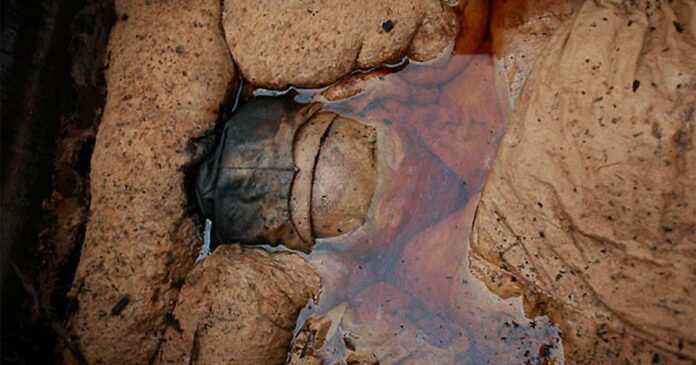Mummies often evoke thoughts of the ancient Egyptians and their sophisticated mummification rituals. These practices aimed to create a seamless transition between life and death and led to remarkable body preservation that is renowned to this day. While most mummies discovered today are a product of this complex process, natural mummification has occurred in rare instances. The Taizhou mummy is an extraordinary example of this, distinguished by its exceptional state of preservation and enigmatic backstory.
Taizhou Mummy Unearthed During Routine Road Works in Eastern China
Chinese road workers were going about their routine tasks in 2011 when they made an extraordinary discovery that would captivate the world. As they excavated the site, they uncovered the remarkably intact remains of a woman from the Ming Dynasty, an ancient Chinese dynasty that existed from 1368 to 1644. The mere fact that her remains had survived the passage of seven centuries was a marvel in itself.

The unexpected find immediately piqued the interest of archaeologists and historians, as it provided an unprecedented opportunity to gain insights into the daily life and customs of the Ming Dynasty. The woman’s preserved body, along with the artifacts and objects found with her, offered a window into a bygone era. Researchers eagerly examined her clothing, jewelry, and personal belongings, hoping to unravel the mysteries of her identity and the social context in which she lived.
The discovery of the Ming Dynasty woman offered a unique opportunity to bridge the gap between the past and the present, providing a tangible connection to a civilization long gone. It sparked a renewed interest in the history and cultural heritage of China, as people from around the world marveled at the extraordinary find. The woman’s story became a symbol of the enduring fascination with the mysteries of the past and the constant quest to uncover the secrets hidden within ancient civilizations.
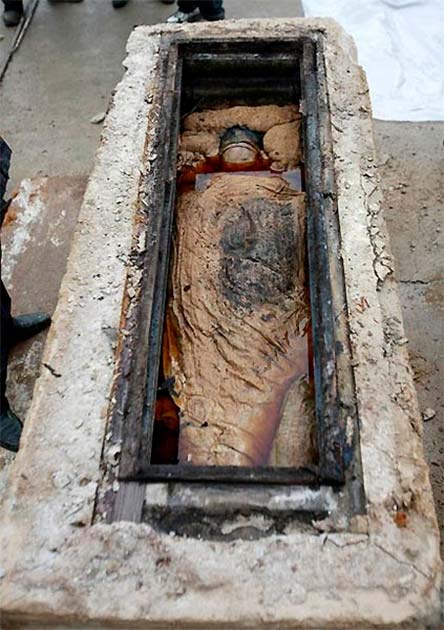
Mysterious Brown Liquid: The Enigmatic Preservation of the Taizhou Mummy
As the archaeologists opened the main coffin, they were greeted by layers of silk and linens, all covered in a mysterious brown liquid. Upon further inspection, they uncovered the astonishingly well-preserved remains of a woman, complete with her body, hair, skin, clothing, and jewelry. Even her eyebrows and eyelashes were impeccably preserved, revealing remarkable details about her appearance from centuries ago.
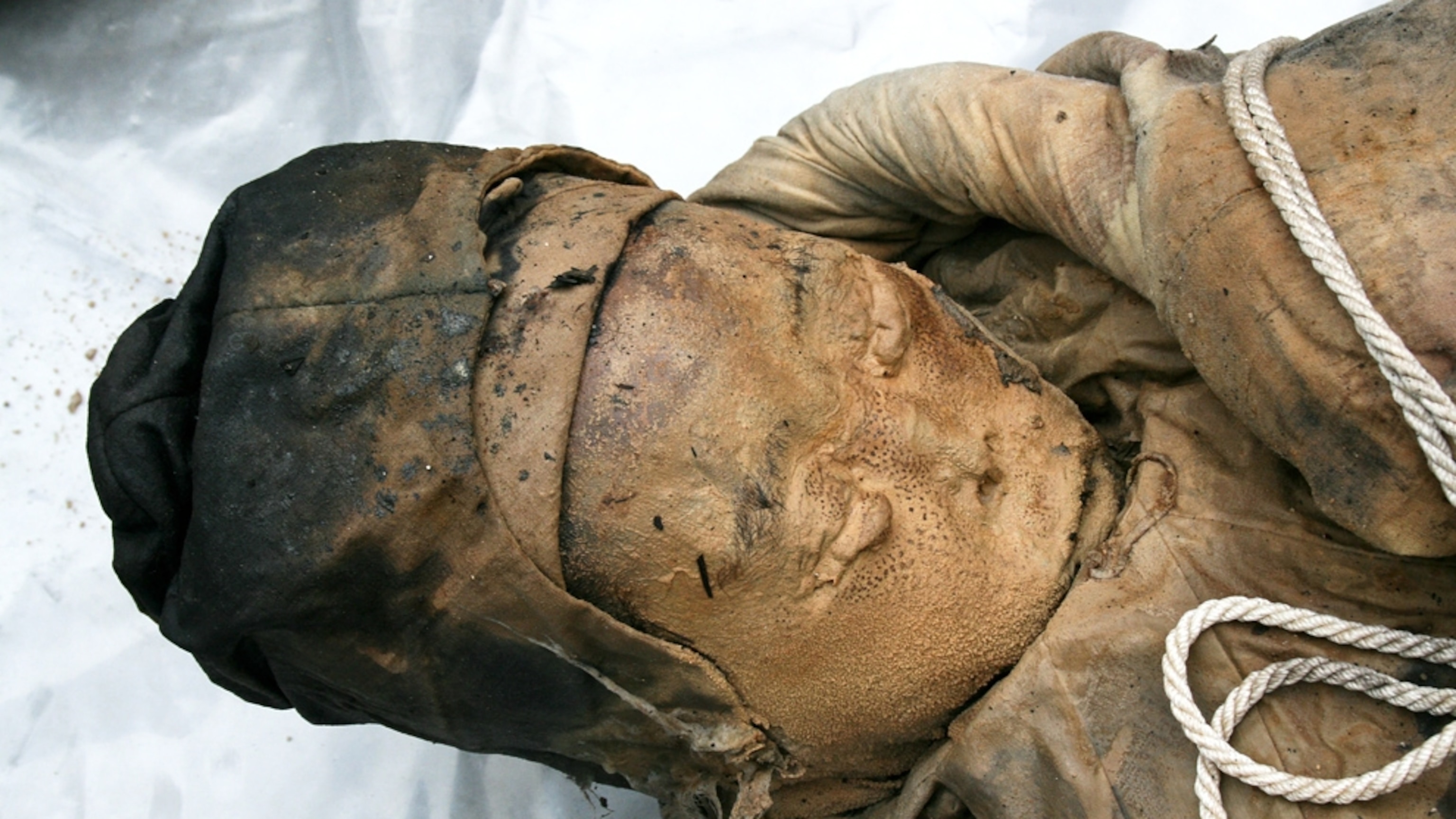
Since the discovery, she has come to be known as the Taizhou mummy or the accidental mummy. Researchers have been unable to definitively determine the age of the woman’s body. However, based on the artifacts and clothing found with the Taizhou mummy, it is believed that she lived during the Ming Dynasty, which spanned from 1368 through 1644. This means that the woman’s body could potentially be up to 700 years old.
The woman was found dressed in traditional clothing from the Ming Dynasty and adorned with several pieces of jewelry, including a striking green ring. Based on the quality of her jewelry and the fine silks she was wrapped in, it is believed that she was a high-ranking civilian. The discovery of her well-preserved remains has provided valuable insights into the daily life and social hierarchy of the Ming Dynasty.
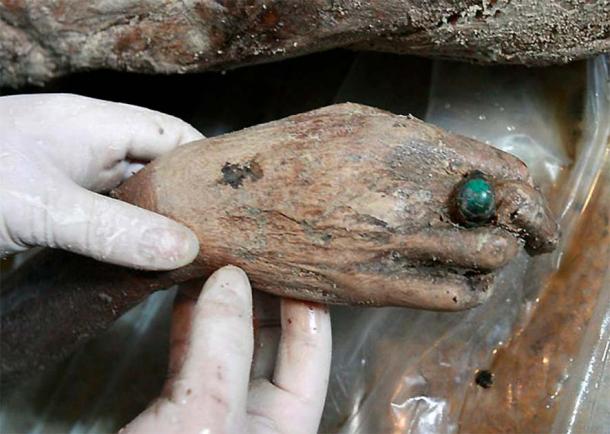
Intriguing Discoveries Within the Coffin
In addition to the stunningly preserved remains of the woman, the coffin also contained bones, ceramics, ancient writings, and other relics. These artifacts offer further clues about the woman’s life and the cultural practices of the Ming Dynasty. The archaeologists who excavated the coffin were unable to determine whether the mysterious brown liquid inside the coffin was used intentionally to preserve the body or if it was simply groundwater that had seeped in over time.
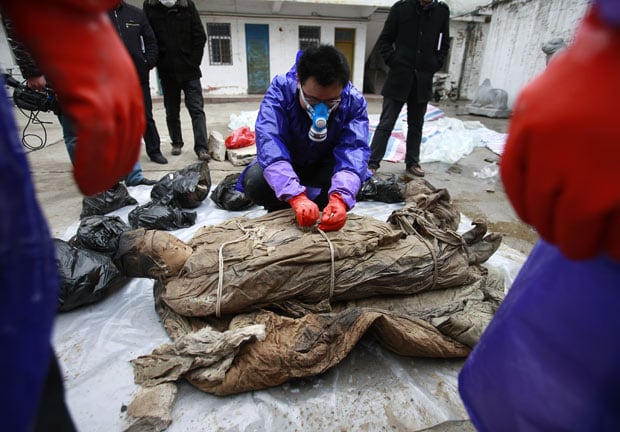
Some researchers, however, have suggested that the woman’s body may have been preserved due to the specific environment in which she was buried. If the temperature and oxygen levels in the water surrounding her were just right, bacteria would have been unable to grow, effectively slowing or halting the process of decomposition. This unexpected discovery left archaeologists and scientists alike eager to learn more about the unique circumstances that led to the Taizhou mummy’s remarkable preservation.
The Taizhou Mummy Raises More Questions Than Answers
This discovery provides researchers with an intimate look into the customs of the Ming Dynasty. They have a very clear view of the clothing and jewelry people wore, and some of the relics that were used during the time. This can answer many questions about the lifestyle, traditions, and daily activities of the people from that time. The discovery of the Taizhou mummy raised numerous questions about the circumstances that led to the exceptional preservation of her body for centuries. Archaeologists are still trying to determine the identity and social status of the woman, as well as the cause of her death and whether her preservation was intentional.

Unfortunately, the secluded location of the discovery and the absence of additional remains may make it difficult to find definitive answers. However, if similar discoveries are made in the future, they may provide the information needed to answer these, and other questions about the so-called accidental mummy.
The accidental discovery of the Taizhou mummy during routine road works in eastern China unveiled an impeccably preserved relic from the Ming Dynasty. This extraordinary find offers a glimpse into the daily life, customs, and social hierarchy of that era. The enigmatic preservation of the Taizhou mummy raises intriguing questions about the circumstances behind its remarkable state, while providing valuable insights into the lives of people from the past. The Taizhou mummy stands as a captivating testament to the mysteries of history, leaving archaeologists and scientists eager to uncover more about its origin and the secrets it holds.

